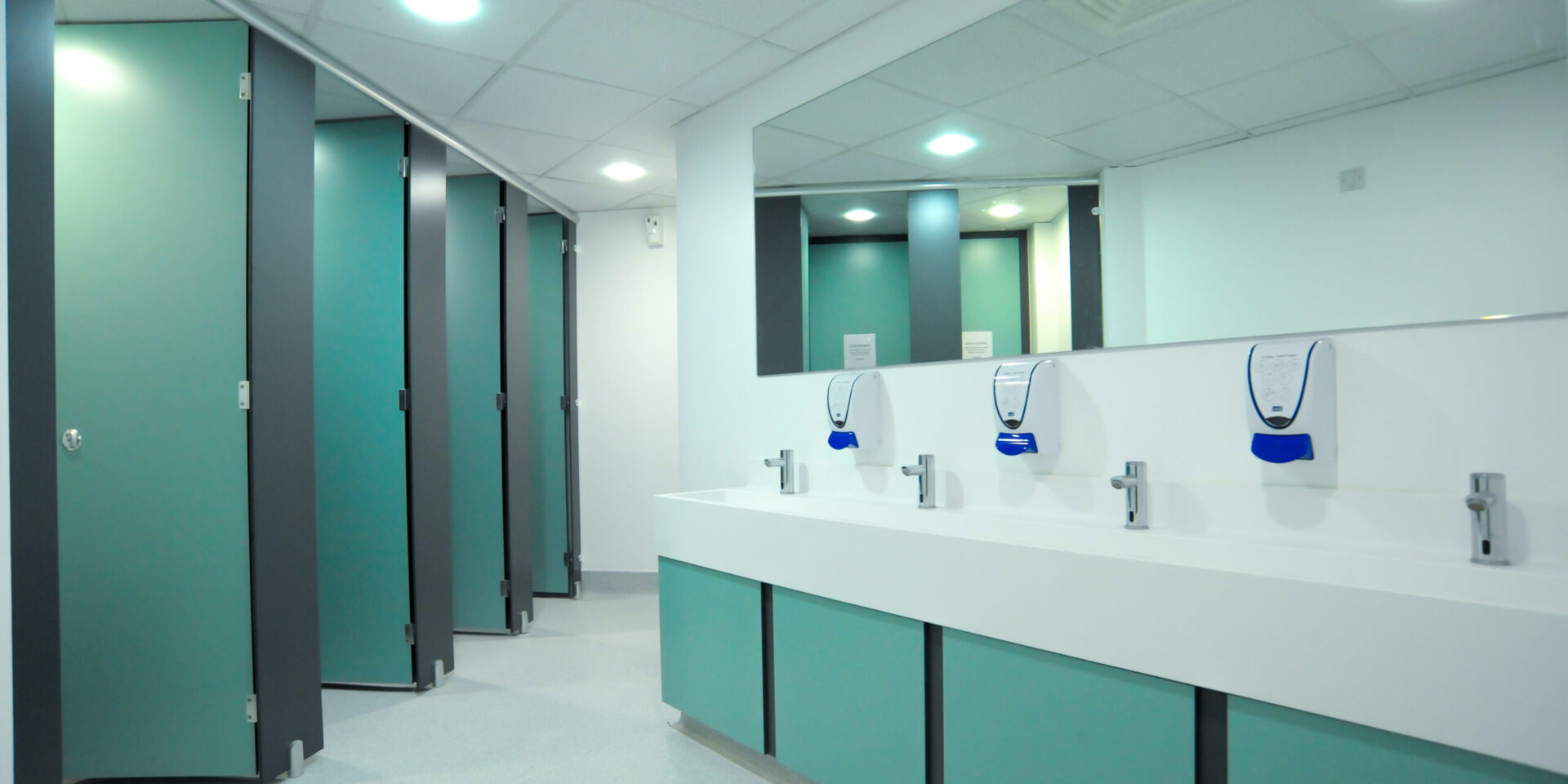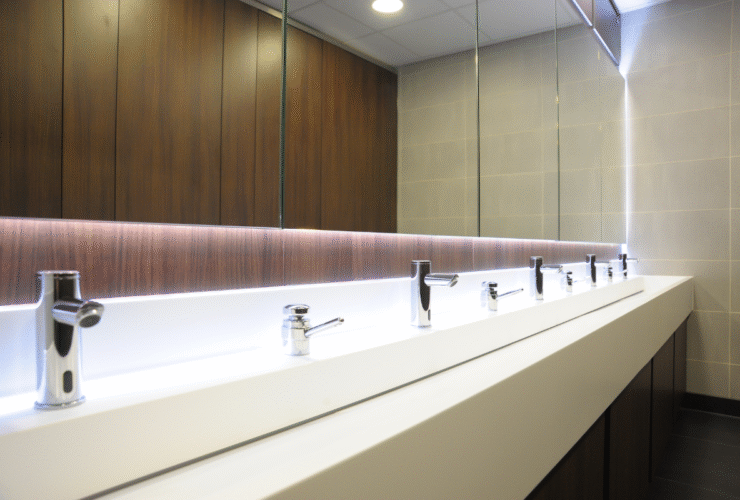When it comes to maintaining school toilet areas, prevention is key. Proper upkeep not only ensures a hygienic environment for students and staff but also helps prevent costly repairs and disruptions. In this article, we will be sharing 10 essential maintenance tips to keep school toilet areas problem-free.
From regular cleaning routines to identifying potential issues early on, these tips will help you stay on top of toilet area maintenance. We’ll cover everything from clogged drains and leaky faucets to plumbing inspections and odour control. Whether you’re a school administrator, caretaker, or facilities manager, these tips are designed to make your job easier and ensure a pleasant experience for everyone who uses the facilities.
By implementing these maintenance practices, you can minimize the risk of plumbing emergencies, maintain a clean and comfortable environment, and extend the lifespan of your school’s toilet fixtures. So, let’s dive in and discover the essential steps to keep your school toilet areas problem-free.
Keywords: school toilet areas, maintenance tips, problem-free, cleaning routines, plumbing inspections, odour control, facilities manager.
Importance of maintaining school toilet areas
Proper maintenance of school toilet areas is crucial for ensuring a safe, hygienic, and comfortable environment for students and staff. These facilities are used by a large number of people on a daily basis, and neglecting their upkeep can lead to a host of problems, both practical and health-related.
clean and well-functioning toilet areas is essential for promoting good hygiene and preventing the spread of illnesses. When these facilities are not properly maintained, they can become breeding grounds for bacteria, viruses, and other pathogens, putting the health and well-being of the entire school community at risk.
d the health implications, poorly maintained toilet areas can also have a negative impact on the overall learning environment. Unpleasant odours, clogged drains, and broken fixtures can create a sense of discomfort and frustration, distracting students and making it difficult for them to focus on their studies. By keeping these areas in top condition, schools can ensure that students and staff feel safe, comfortable, and ready to learn.
Common problems in school toilet areas
School toilet areas are often subjected to heavy use and, as a result, can face a variety of maintenance challenges. Some of the most common problems encountered in these facilities include:
Clogged drains: Toilets, sinks, and floor drains can become clogged with a build up of debris, toilet paper, and other materials, leading to backups and flooding.
Leaky faucets and fixtures: Worn washers, faulty valves, and other issues can cause faucets and other fixtures to leak, leading to water waste and potential damage to surrounding surfaces.
Vandalism and misuse: Students may intentionally or unintentionally damage toilet stalls, sinks, soap dispensers, and other fixtures, creating the need for costly repairs and replacements.
The role of cleanliness in school toilet maintenance
Maintaining a high level of cleanliness in school toilet areas is essential for preventing the spread of germs and ensuring a comfortable, safe environment for students and staff. Regular cleaning and disinfection routines are crucial for eliminating bacteria, viruses, and other harmful microorganisms that can thrive in these high-traffic areas.
, such as using the right cleaning solutions, thoroughly scrubbing surfaces, and paying attention to high-touch areas, can help to create a more hygienic and inviting atmosphere. Additionally, ensuring that toilet paper, soap, and paper towels are always well-stocked can encourage good hygiene practices among users.
d the immediate benefits of cleanliness, maintaining a clean and well-cared-for toilet area can also have a positive impact on the overall perception of the school. When students and staff see that the school takes pride in the upkeep of its facilities, it can foster a sense of community and respect, leading to better behaviour and reduced instances of vandalism or misuse.
Regular inspection and maintenance practices
Implementing a comprehensive inspection and maintenance schedule is crucial for keeping school toilet areas problem-free. This includes regularly checking for issues such as leaks, clogged drains, broken fixtures, and signs of wear and tear.
inspections should involve a thorough examination of all toilet stalls, sinks, soap dispensers, and other fixtures, as well as the condition of the flooring, walls, and ventilation systems. Any issues identified should be addressed promptly to prevent them from escalating into larger problems.
addition to regular inspections, a well-planned maintenance schedule can help to proactively address potential issues before they arise. This may include tasks such as flushing and cleaning drains, replacing worn washers and seals, and addressing any signs of damage or deterioration. By staying on top of these maintenance tasks, schools can minimize the risk of unexpected plumbing emergencies and ensure that their toilet areas remain in optimal condition.
Ensuring proper ventilation and air circulation
Proper ventilation and air circulation are essential for maintaining a healthy and comfortable environment in school toilet areas. Inadequate airflow can lead to the build up of unpleasant odours, the growth of mould and mildew, and the spread of airborne pathogens.
ventilation, schools should install high-quality exhaust fans or other mechanical systems that can efficiently remove stale air and introduce fresh air into the space. These systems should be regularly inspected and maintained to ensure they are functioning correctly and providing the necessary air circulation.
to mechanical ventilation, schools can also consider incorporating natural ventilation strategies, such as opening windows or installing operable vents, to improve air quality and reduce the reliance on energy-intensive systems. By prioritizing proper ventilation, schools can create a more pleasant and healthier environment for students and staff.
Plumbing and drainage maintenance
Maintaining the plumbing and drainage systems in school toilet areas is crucial for preventing costly repairs and ensuring the smooth operation of these facilities. Regular inspections and preventive maintenance can help identify and address issues before they escalate into larger problems.
clearing and flushing drains can help prevent clogs and backups, which can lead to flooding and water damage. Schools should also consider installing high-quality, durable plumbing fixtures that are designed to withstand heavy use and minimize the risk of leaks or other issues.
addition to routine maintenance, schools should also have a plan in place for addressing any plumbing emergencies that may arise. This may include having a reliable plumbing contractor on call, as well as having the necessary tools and supplies on hand to quickly respond to and resolve any plumbing-related problems.
Preventing vandalism and misuse of school toilet areas
Vandalism and misuse of school toilet areas can be a significant challenge, leading to costly repairs, disruptions to the learning environment, and potential health and safety concerns. To address this issue, schools should implement a multi-faceted approach that combines proactive measures, monitoring, and consequences for inappropriate behaviour.
key strategy is to design toilet areas that are visually appealing, well-lit, and easy to monitor. This can include the use of transparent partitions, durable materials, and strategically placed security cameras or staff supervision. By creating an environment that discourages vandalism and misuse, schools can help to foster a sense of respect and ownership among students.
addition to physical design considerations, schools should also have clear policies and procedures in place for addressing instances of vandalism or misuse. This may include implementing disciplinary measures, such as suspensions or community service, and educating students on the importance of respecting school property and maintaining a clean, safe environment.
Promoting hygiene and sanitation practices among students
Encouraging good hygiene and sanitation practices among students is essential for maintaining the cleanliness and functionality of school toilet areas. By educating students on the importance of these practices, schools can empower them to be active participants in the maintenance and upkeep of these facilities.
can involve implementing educational campaigns that teach students about the importance of handwashing, proper toilet flushing, and the responsible use of toilet paper and other supplies. Schools can also consider posting signage or other visual aids in the toilet areas to reinforce these messages and provide clear guidance on appropriate behaviour.
d education, schools should also make it easy for students to engage in good hygiene practices by ensuring that soap, paper towels, and other necessary supplies are always readily available. By creating an environment that supports and encourages good hygiene, schools can help to prevent the build up of debris, the spread of germs, and the misuse of toilet facilities.
Training and educating janitorial staff for effective maintenance
The success of any school toilet maintenance program depends heavily on the knowledge, skills, and dedication of the janitorial staff responsible for these areas. Providing comprehensive training and ongoing education is essential for ensuring that these individuals have the tools and resources they need to effectively maintain the cleanliness and functionality of the school’s toilet facilities.
a range of topics, including proper cleaning and disinfection techniques, the identification and resolution of common plumbing issues, the use of specialized equipment and tools, and the importance of maintaining detailed maintenance records. Additionally, schools should ensure that their janitorial staff are kept up-to-date on any changes or updates to the school’s maintenance protocols or policies.
in the training and development of their janitorial staff, schools can empower these individuals to take a proactive and informed approach to maintaining the school’s toilet areas. This, in turn, can lead to a more efficient and effective maintenance program, reduced costs associated with repairs and replacements, and a healthier, more comfortable environment for students and staff.
Conclusion: Creating a safe and healthy environment for students
Maintaining school toilet areas is a crucial aspect of ensuring a safe, healthy, and comfortable learning environment for students and staff. By implementing the 10 essential maintenance tips outlined in this article, schools can proactively address common problems, promote good hygiene and sanitation practices, and create a sense of pride and ownership among the school community.
regular cleaning and inspection routines to effective plumbing and ventilation maintenance, these strategies can help to prevent costly repairs, minimize the risk of health and safety issues, and foster a positive perception of the school’s facilities. By prioritizing the upkeep of their toilet areas, schools can demonstrate their commitment to the well-being of their students and staff, while also creating an environment that is conducive to learning and personal growth.
maintenance of school toilet areas is not just about keeping these facilities functional; it’s about creating a safe, hygienic, and welcoming space that supports the overall success and well-being of the entire school community. By following these essential tips, schools can ensure that their toilet areas remain problem-free and contribute to a positive, enriching educational experience for all.



